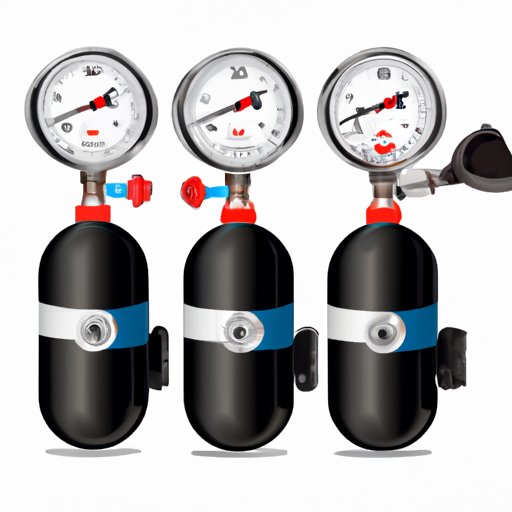Introduction
PSI, short for pounds per square inch, may seem like just another technical term with no real-world implication. However, PSI plays an essential role in our daily lives, from the air we breathe to the tires we drive on. Understanding PSI is crucial for maintaining safety, performance, and efficiency. In this article, we will delve into the meaning of PSI, its practical applications in various industries and situations, and how to measure it accurately.
Section 1: Understanding PSI: What it is and Why it Matters
When you hear PSI, the first thing that might come to mind is tire pressure. However, PSI refers to the force exerted by a fluid or gas per unit of area. PSI is used extensively in scientific research, engineering, medical devices, and countless other applications. Measuring PSI accurately is crucial because it affects everything from safety to performance. Inaccurate readings can lead to costly errors, accidents, and even loss of life.
To measure PSI accurately, it is important to use the right tools and techniques. A pressure gauge is the most common tool for measuring PSI. Ensure that the gauge is calibrated and the reading is taken at the right temperature and elevation. Taking readings with dirty or damaged gauges can result in inaccurate measurements.
Section 2: PSI and Your Tires: The Importance of Proper Inflation
Proper tire inflation is essential for safety and performance. Tire pressure affects everything from fuel efficiency to braking distance. Under-inflated tires can cause increased wear and tear, reduced handling, and lower gas mileage. Over-inflated tires can result in a harsh ride, reduced traction, and uneven tire wear.
Measuring tire pressure only takes a few minutes and can be done with a tire pressure gauge or at a gas station. The PSI range for a specific tire is usually printed on the sidewall or in the owner’s manual. Tires should be checked and adjusted at least once a month, and always before long trips.
Section 3: The Science Behind PSI: Exploring Pressure, Force, and Measurement
Understanding PSI requires a bit of technical knowledge about pressure, force, and measurement. Pressure is defined as the force exerted per unit of area. For example, when you push down on a balloon, the pressure inside increases. PSI measures the pressure relative to atmospheric pressure.
The science of PSI is essential in various fields such as engineering, physics, and chemistry. In engineering, PSI is used to measure fluid pressure in hydraulic machines such as cranes and excavators. In physics, PSI is used to calculate force and pressure in gases and liquids. And in chemistry, PSI is essential for manufacturing processes such as distillation and extraction.
Section 4: PSI in Sports: How Pressure Affects Performance
PSI plays a vital role in various sports such as football, basketball, and soccer. For these sports, the pressure inside the ball affects how it handles. An over-inflated ball bounces higher and moves faster, while an under-inflated ball is easier to grip and control.
PSI regulations are in place to ensure fair play. For example, in the NFL, footballs must be inflated to between 12.5 and 13.5 PSI. One notable controversy surrounding PSI regulations occurred in 2015, during the ‘Deflate-gate’ scandal. The New England Patriots were accused of intentionally deflating footballs below regulation PSI for a game.
Section 5: Common Uses of PSI: From Hydraulic Systems to Scuba Diving
PSI is used in countless applications as it is a convenient and accurate way to measure pressure. PSI is essential for hydraulic systems that are used for lifting heavy loads, moving machinery, and mining. In scuba diving, PSI is used to measure the air pressure in tanks, which affects the length of the dive. In air compressors, PSI is used to regulate the amount of pressure applied to a given tool or machine.
Conclusion
PSI, short for pounds per square inch, is an essential concept that plays a role in various aspects of our daily lives. It is crucial to measure PSI accurately to maintain safety, performance, and efficiency. In this article, we explored the meaning of PSI, its practical applications in various industries and situations, and how to measure it accurately. We also discussed the importance of proper tire inflation, the science behind PSI, sports performance, and common uses of PSI. Understanding PSI and its applications is important for making informed decisions and solving PSI-related problems.
